
TSW review tapping and sounding out CVC words.
- Subject:
- English
- Material Type:
- Activity/Lab
- Author:
- Christina Trent
- Date Added:
- 08/04/2020

TSW review tapping and sounding out CVC words.

English Instructional Plan –Generating Questions for Research K-1

This video is part of the Learn and Grow with WHRO TV series. Watch Mary Mathias teach about how to summarize.

This is a fun bingo ice breaker game designed to get students talking to each other about themselves. Students will be able to get to know each other in a fun and engaging way.

Students will interact with a set of two slangs and dialects (1920’s English and contemporary Scottish) to begin to understand how English can be different for different people groups. Then, they will begin to analyze and explain how trying to communicate in this way will slow down or hinder international communication. Students will learn the definition of the internet, how the internet is used to communicate across the globe throughout nations and people groups, and how in professional settings, the internet utilizes Standard English (in English speaking nations).
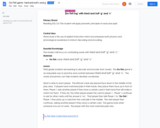
Word study is the use of explicit instruction which encompasses both phonics and phonological awareness to instruct decoding and encoding. Third grade students are learning to decode and encode hard and soft ‘g’ and ‘c’. The Go Fish game is an enjoyable way to practice and contrast between Hard and Soft ‘g’ and ‘c’. The words and photos can help students develop vocabulary.
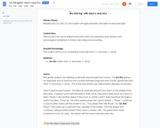
Word study is the use of explicit instruction which encompasses both phonics and phonological awareness to instruct decoding and encoding. Third grade students are learning to decode and encode short vowels. The Go Fish game is an enjoyable way to practice and contrast between long and short vowels, specifically short short ‘o’ and long ‘o’ (oCe). The words and photos can help students develop vocabulary.
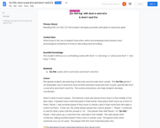
Word study is the use of explicit instruction which encompasses both phonics and phonological awareness to instruct decoding and encoding. Third grade students are learning to decode and encode short vowels. The Go Fish game is an enjoyable way to practice and contrast between long and short vowels, specifically short a and aCe and short I and iCe. The words and photos can help students develop vocabulary.

Word study is the use of explicit instruction which Third grade students are learning to decode and encode short vowels. The Go Fish game is an enjoyable way to practice and contrast between long and short vowels, specifically short a and aCe. The words and photos can help students develop vocabulary. encompasses both phonics and phonological awareness to instruct decoding and encoding.
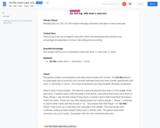
Word study is the use of explicit instruction which encompasses both phonics and phonological awareness to instruct decoding and encoding. Third grade students are learning to decode and encode short vowels. The Go Fish game is an enjoyable way to practice and contrast between long and short vowels, specifically short short ‘u’ and long ‘u’ (uCe). The words and photos can help students develop vocabulary.
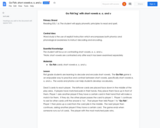
Word study is the use of explicit instruction which encompasses both phonics and phonological awareness to instruct decoding and encoding. First grade students are learning to decode and encode short vowels. The Go Fish game is an enjoyable way to practice and contrast between short vowels, specifically short vowels e, o, and u.

This is a professional learning resource prepared for VBCPS and intended to be modified by other divisions as needed. The Schoology course was built based on the #GoOpenVA Workshop in a Box and enables asynchronous, remote professional learning.
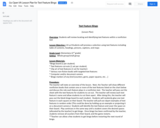
Students will review locating and identifying text features within a nonfiction text
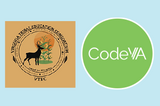
Students will investigate the characteristics of heroes through the book Go Show the World. Students will select one of the heroes identified in the book and research them further, creating a Twine passage that shares what the student learned about the Native figure.This lesson was created through a partnership between CodeVA and the Virginia Tribal Education Consortium (VTEC).

Connecting devices to a network or the Internet provides great benefit, but care must be taken to protect private information such as a student’s name, phone number, and address. Passwords are used to protect devices and information from unauthorized access. Because computer programs can be used to guess passwords, strong passwords have characteristics that make them more difficult to guess. Many sites have rules as to the length and composition of passwords; these rules help create stronger passwords. The practice of not sharing passwords should be emphasized in the classroom and at home. At the elementary level, students are encouraged to use passwords. These passwords may not be as complex as those used by adults in protecting information.

Students will think of pros and cons of the impact of computers and computing in daily life as a group. Then they will put those into Cause and Effect statements. The teacher will then pull the class back together for a whole group discussion and have students tell the teacher their Cause and Effect statement about computers and computing. The teacher will write them on the whiteboard. The teacher will then pass out green post-its and yellow post-its to the groups. Groups will take turns putting a green post-it by a positive cause and effect and a yellow post-it by a negative cause and effect.

Adam Seipel, with VaSCL (Virginia School Consortium for Learning), provides this recorded presentation (about 53 minutes long) and slide deck for how to set up and use the tools of Google Classroom.

This presentation focuses on the effective use of Google Docs and Slides. It is about 50 minutes long and the accompanying slide deck is included.
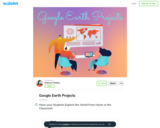
Katie Fielding of Prince William created a Wakelet for teachers on using Google Earth for various types of educational projects.

This presentation focuses on the effective use of Google Forms. It is about 44 minutes long and the accompanying slide deck is included.